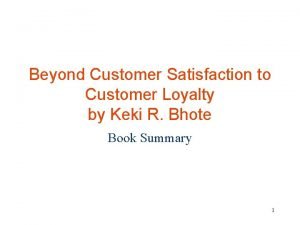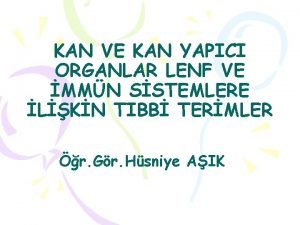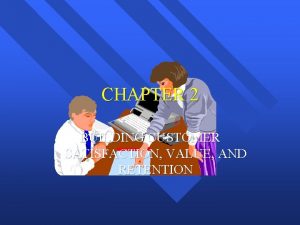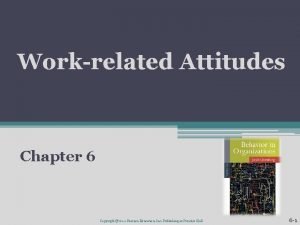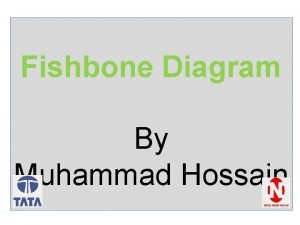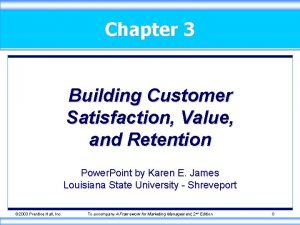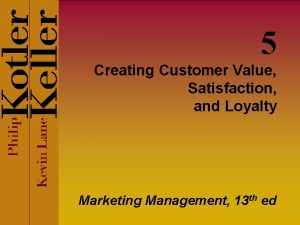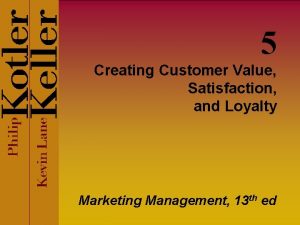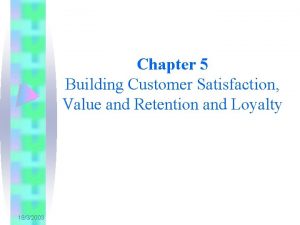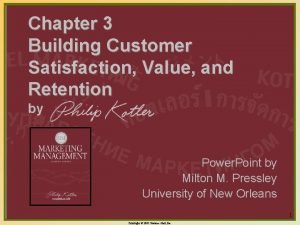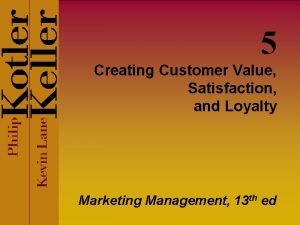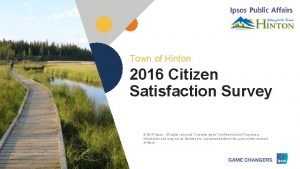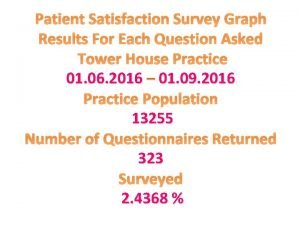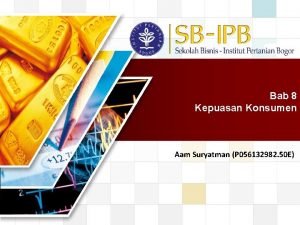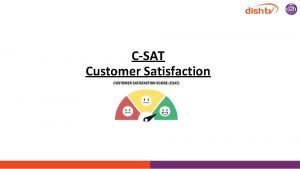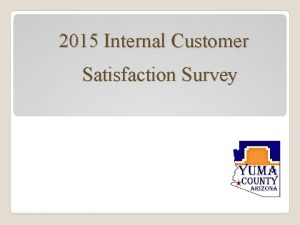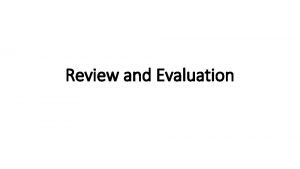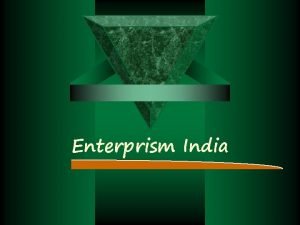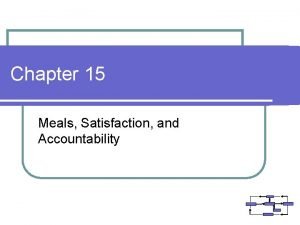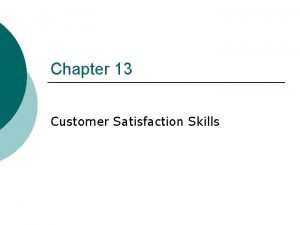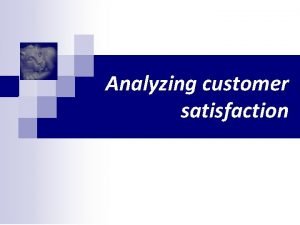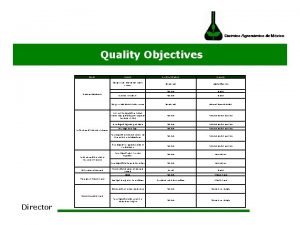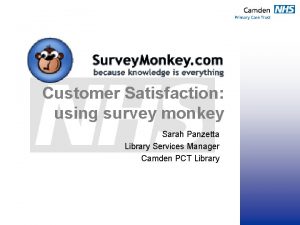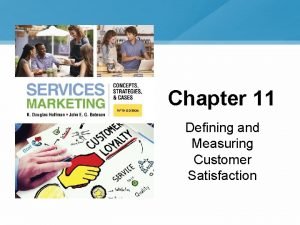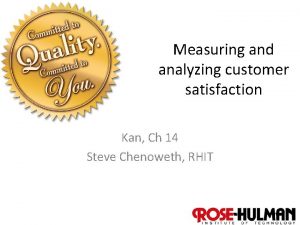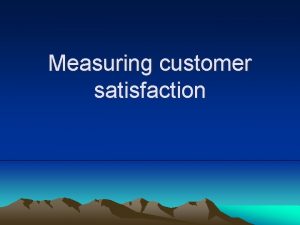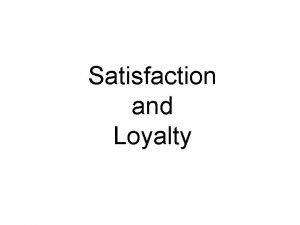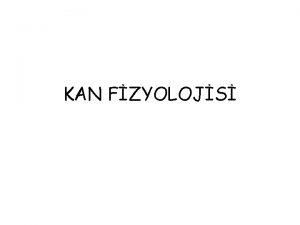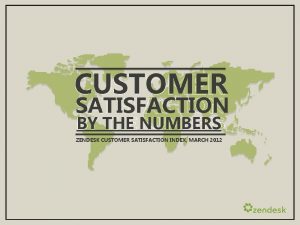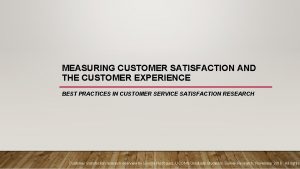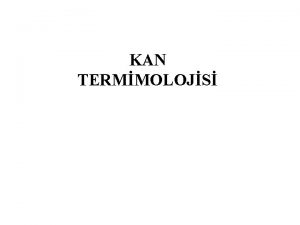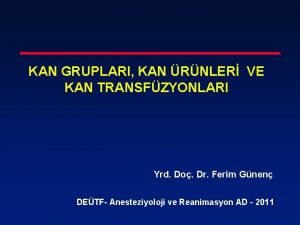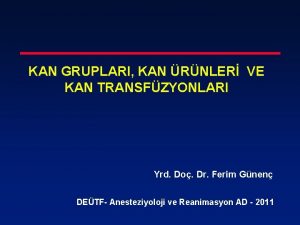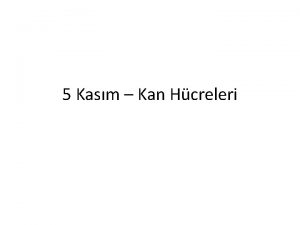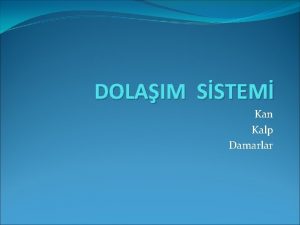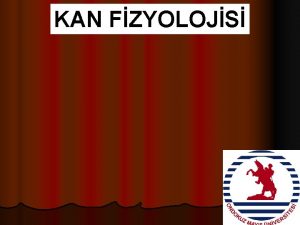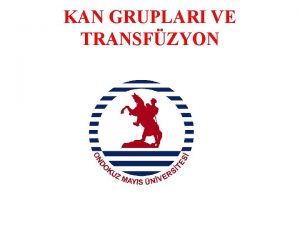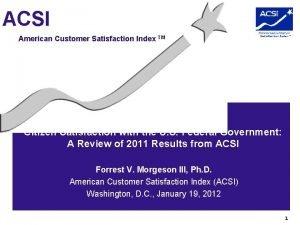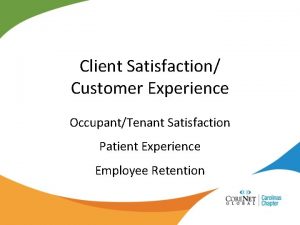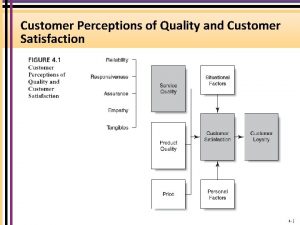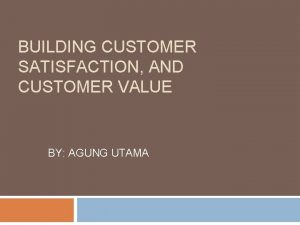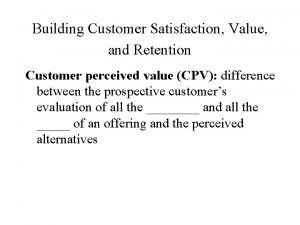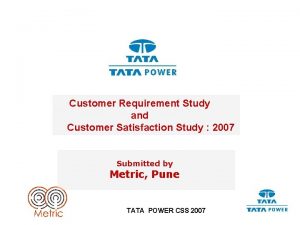Measuring and analyzing customer satisfaction Kan Ch 14



























- Slides: 27

Measuring and analyzing customer satisfaction Kan, Ch 14 Steve Chenoweth, RHIT 1

Recall from Week 1 CSSE 576 Learning Outcomes: Acceptance • Effectively verify customer satisfaction. • On-site and beta testing • Customer surveys • Analyzing data 2

And from Week 2 How do we know if it’s “quality”? • Mean time to failure • Defect density • Customer problems • Customer satisfaction… Do you see “quality” here? 3

Customer Satisfaction Metrics • • Often a 5 -point scale: Can be overall, or For specific qualities. HP uses “FURPS”: – Functionality – Usability – Reliability – Performance – Service Week 2, cntd 4

Customer Sat • Can be expressed to the customer as a question, in different ways: • Completely satisfied? Most commonly asked for • Satisfied? • Dissatisfied? • Neutral or worse? Week 2, cntd 5

Relative scope of the 3 metrics • These are subset relationships Week 2, cntd 6

And from Week 7 (last week) Why availability? • In Ch 14 to follow, Kan shows that, in his studies, availability stood out as being of highest importance to customer satisfaction. • It’s closely related to reliability, which we’ve been studying all along. Right – We’re not the only ones with availability problems. Consider the renewable energy industry! 7

So, on to cust sat proper! • The ultimate validation of quality. • Tom Demarco claims that Microsoft Word is a Great Product. Why? – So many people use it. • TQM: Customer satisfaction is the direct link with ongoing use. – A leading indicator of future sales. Wham-O! A great product in action, 1957. 25 Million were sold in under 4 months. 8

It’s a real thing (psychologically) • Starts with customer expectations prior to purchase. “Anticipated performance. ” • Could be, say (Miller, 1977): – – Ideal Expected Minimum tolerable Desirable • Link is to perception of filling that need after purchase. – Does it perform “as expected”? 9

The Disconfirmation Model • Compares expectations and perceived product performance. • Traditional paradigm is based on: – Expectations – Performance – Disconfirmation – Satisfaction • A sum of satisfactions over the features used. • Has both cognitive and affective components. CS = Customer Sat. The “Disconfirmation” proves indirectly the two ? Relationships. 10

Two marketing events are involved • Retaining existing customers • Targeting non-customers (5 times more costly): • Why do they buy? Hedonic and utilitarian values: – Sensory and experiential – Over time, instrumental and functional qualities prevail. Right – Long view: is it all just utilitarian? 11

Can you do better? • In the 1990’s, at NCR, we tried for “customer delight. ” • Found it’s mighty hard to sustain! Right – Here’s the problem: 12

Use surveys to measure? • Maybe you already have the data? – Ongoing customer relationships with marketing – Complaint data – Customer visits – Customer advisory councils & user conferences – Trouble tickets • Or, it’s time for a survey! 13

Different methods different results • Face-to-face – Personal interview – Focus groups • Telephone interviews • Mailed questionnaires • Emailed questionnaires 14

Face-to-face • High validity – You can read facial expressions and gestures. – Easy to ask follow-up questions. – Can use exhibits to aid in explanations • But, interviewers also tend to deviate from the agenda as they build a personal relationship! “So, how do you like your new car sound system? ” – Asked better if they were in the car? 15

Telephone interviews • • • Less expensive Easy to monitor for quality Can be computer-aided Easier to keep short More balkers Say, how about those new servers in the cloud!? 16

Mailed / emailed • Looks like junk mail • Low response rates – Respondents may differ from those ignoring • Questionnaire must be pre-validated – Need professional knowledge and experience • How do you “sample” a large customer base? – It’s an art form 17

How big is big enough? 18

Or, 19

What rating scale to use? • Most common: – Very satisfied – Satisfied – Neutral – Dissatisfied – Very dissatisfied • Then look at the distribution of responses… The satisfied customer in action. Wait! They aren’t using the product! 20

How to you act on the data? • Hard to know if it’s all global. • So, you should’ve picked things that will enable this! • What areas of strength and weakness could you use for quality improvements? • Interpretation is an art: – High satisfaction with reliability and low satisfaction with documentation – does not necessarily mean you should work on the latter! 21

Kan’s UPRIMD-A parameters 22

Multiple regression analysis 23

Logistic regression coefficients 24

How about organizational sat? • This can color satisfaction with products. • Satisfaction and loyalty could be primarily company-based. – Support and service span products. – Marketing does, too! – Company image is considered. 25

How good is good enough? • Need to consider effect of trends over time. 26

Recommendations for small orgs • Post-purchase call back program • Complaint management process* • Customer satisfaction survey program *Likely to be most important! • Leverage the benefits of customer involvement in: – – Requirements Design Functional verification test Various forms of customer testing 27
 Beyond customer satisfaction
Beyond customer satisfaction Kan yapıcı organlar
Kan yapıcı organlar Customer satisfaction value and retention
Customer satisfaction value and retention Measuring job satisfaction
Measuring job satisfaction Low customer satisfaction cause and effect diagram
Low customer satisfaction cause and effect diagram How to build customer satisfaction value and retention
How to build customer satisfaction value and retention What are customer value satisfaction and loyalty
What are customer value satisfaction and loyalty Creating customer value satisfaction and loyalty
Creating customer value satisfaction and loyalty Building customer satisfaction value and retention
Building customer satisfaction value and retention Creating customer value satisfaction and loyalty
Creating customer value satisfaction and loyalty Customer satisfaction value and retention
Customer satisfaction value and retention What is customer value satisfaction and loyalty
What is customer value satisfaction and loyalty Top-2-box customer satisfaction
Top-2-box customer satisfaction Satisfaction graph
Satisfaction graph Satisfaction logo
Satisfaction logo Objectives of customer satisfaction
Objectives of customer satisfaction Internal client satisfaction survey
Internal client satisfaction survey Iso12207
Iso12207 Enterprism
Enterprism A walk-through customer satisfaction audit
A walk-through customer satisfaction audit Customer satisfaction skills
Customer satisfaction skills Analyze customer satisfaction
Analyze customer satisfaction Objectives of customer satisfaction
Objectives of customer satisfaction Scope of customer satisfaction
Scope of customer satisfaction Sarah panzetta
Sarah panzetta Defining customer satisfaction
Defining customer satisfaction Low customer satisfaction fishbone diagram
Low customer satisfaction fishbone diagram Satisfaction mv
Satisfaction mv
